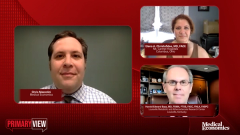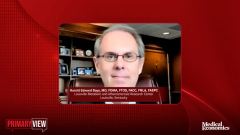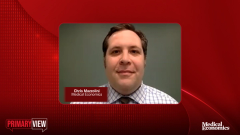
Optimizing Therapy for Weight Management
Recommendations for selecting among various therapies available for weight loss and expectations for where this field is headed next.
Episodes in this series

Chris Mazzolini: The final discussion point I wanted to discuss with both of you is the “bring it all together point” in terms of the risks, benefits and the challenges of treating a patient when you’re managing options of weight loss surgery, pharmacologic agents and medical devices. How do you balance those? How do you approach the patient? Obviously, there aren’t any quick fixes in weight loss management. How do you approach patients with these various options? Dr. Bays, we’ll start with you.
Harold Edward Bays, M.D., FOMA, FTOS, FACC, FNLA, FASPC: Sure. I think it all starts with education, so the patient is aware of the particular options. Also, it starts with education of the clinician. We just discussed your use of this hydrogel and such, so many times, it seems like we go out of our way to make things complicated for clinicians because you get this curious term, that it’s a device. I think a lot of people, when they hear the word device, think of metal. They think, “There’s got to be some sort of machine involved. It’s a device.” But in fact, the reason it gets that name is because now that we’re engaged in clinical research of these types of hydrogel types of therapeutics, the way the name originates is because it has to do with what a particular division of the FDA [Food and Drug Administration] proves these types of agents. I can tell you, as a clinical trialist, I can’t think of many differences between the kinds of clinical trials we do with hydrogel types of therapeutics versus any other kind of drug studies that we do. They’re virtually identical. Even though the studies may be classified differently by the FDA, from a practical standpoint, I’m taking care of a patient standpoint, so I don’t see many differences between this classification of a device in terms of hydrogels versus drug treatment. I want to make sure that people keep in mind that if you don’t have to undergo laparoscopic surgery, you should use this agent. It’s not an endoscopic procedure. It’s none of those things. It’s exactly as was described before, where you’re just taking gel capsules, then the only other perspective — and I’m going to give this perspective of a clinical researcher because that’s what I do — where people say, “Look, Chris, where we are today is where we were 30 years ago with regards to diabetes, hypertension and dyslipidemia. Where we are today with anti-obesity agent development is exactly where we were with these other metabolic diseases.” When I first started out 30 years ago, we were developing these anti-diabetes drugs. We had pork insulin. There was even some time when we had phenformin, but that wasn’t a very pleasant treatment experience for the clinician or, particularly, for the patient. But then we developed these substantially improved diabetes drugs and they became the standard of care. The same thing happened with hypertension. When I started out, we had methyldopa and reserpine, all these kinds of crazy drugs, but then we developed the ACE [angiotensin-converting enzyme] inhibitors, the ARBs [angiotensin receptor blockers], and the calcium channel blockers. Now, as opposed to the not very well-tolerated, not particularly effective agents, we have very well-tolerated agents that are highly effective and became the standard of care. And, with lipids, oh my gosh, when I first started, we had what we call “fire and sand.” We had niacin, which caused people’s bodies to flush. And then we had bile acid resins, which, if you’ve never administered bile acid resins or taken bile acid resins, you’ve just missed out on life because it’s not very well-tolerated, has a lot of drug interactions. But then we developed the statins and then there was a whole host of other dyslipidemia drug treatments that we have right now, which are very well-tolerated and highly effective. That’s where we are today. Today, I think we have drug treatments that are better than people think they are. I understand there were some dark days, 10, 15, 20 years ago, where some drugs had some bad side effects and created a lot of problems, but I think people need to wash that away and realize that we’re in a new age. So they need to look at the existing science on the existing drugs. I will throw this out here as a teaser because it isn’t only about existing drugs, but we have a lot of stuff going on in the pipeline, so people need to buckle up because there’s a lot going on. Where we are today with anti-obesity drugs and anti-obesity drug development is where we were 20 to 30 years ago in regard to drug treatments for diabetes, hypertension and dyslipidemia. It’s a very exciting time.
Transcript edited for clarity.
Newsletter
Stay informed and empowered with Medical Economics enewsletter, delivering expert insights, financial strategies, practice management tips and technology trends — tailored for today’s physicians.







